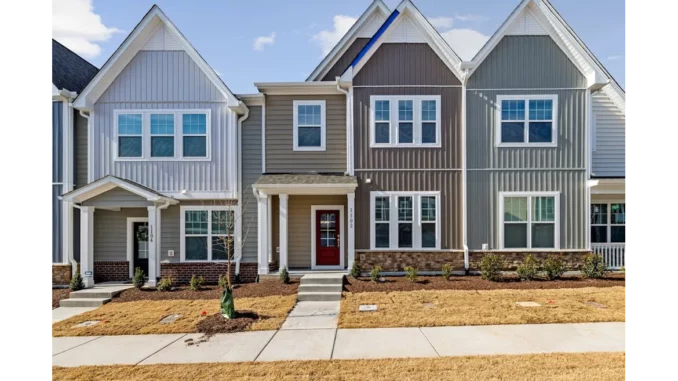
In a noteworthy development within the sphere of housing and environmental conservation, Housing Secretary Angela Rayner has endorsed a substantial housing project in Cranbrook, a village nestled within Kent’s cherished Area of Outstanding Natural Beauty (AONB) near Tunbridge Wells. This decision signifies a shift from the preceding administration’s position, when former Housing Secretary Michael Gove had previously blocked the proposal. To delve into the intricacies and community reactions surrounding this decision, I engaged with Thomas Ellison, a local councillor and committed advocate for sustainable development, who has been intimately involved with the project since its inception.
Focus360 Energy: property compliance services – pre-planning to post-construction. Learn more.
Ellison, a lifelong resident of Cranbrook, greeted me at a charming local café, with the proposed development site just a short stroll away. As we settled into our conversation over cups of tea, he shared his insights, embodying both the aspirations and apprehensions of the Cranbrook community. “Marcia, it’s been quite a journey,” he began, his voice reflecting a blend of relief and eagerness. “When the independent inspector initially approved the scheme, it seemed like a progressive step. The plan for 165 homes, with 40% designated as affordable housing, was a pivotal opportunity for our village to expand responsibly while tackling the acute housing shortage.”
However, the path was fraught with challenges. Ellison recounted the community’s disillusionment when Michael Gove intervened, criticising the development’s “generic suburban” appearance contrary to local design standards and the distinct character of the AONB. “It was a gut punch,” he admitted. “The rejection felt like a dismissal of our concerted efforts to ensure the development would harmonise with the unique charm of our village.” The situation grew more complex as Berkeley, the developers, mounted a legal challenge against Gove’s decision, leading to a period of uncertainty. “There were mixed emotions,” Ellison recalled. “While some feared environmental degradation, many of us hoped the High Court would recognise the potential benefits of the project. Unfortunately, the court upheld the rejection, and it seemed like we were at a standstill.”
With Angela Rayner’s recent approval, the community perceives a renewed sense of hope. Ellison conveyed cautious optimism, observing that Rayner’s decision underscores the potential for balanced development. “Her approval is not merely a go-ahead for construction,” he explained. “It signifies an acknowledgment that sustainable growth and conservation can coexist. We now have the chance to set a benchmark for how developments in AONBs should be approached.” The dialogue naturally transitioned to the community’s influence in shaping the project. “We’re committed to collaborating with Berkeley to ensure the final design respects our local heritage and environment,” Ellison emphasised. “It’s crucial that the homes integrate seamlessly into the landscape, using materials and architectural styles that echo Cranbrook’s character.”
Ellison was acutely aware of the broader implications of this decision. “This isn’t just about Cranbrook,” he noted. “It’s about establishing a precedent for balancing housing needs with environmental stewardship across the nation. Angela Rayner’s decision could guide more nuanced approaches to development in protected areas.” Despite his optimism, Ellison acknowledged the lingering concerns among residents. “There are legitimate worries about increased traffic, strain on local services, and the potential impact on wildlife,” he conceded. “As a community, we must remain vigilant and proactive, ensuring that the developers are held to the highest standards of accountability and transparency.”
As our conversation drew to a close, Ellison expressed his aspirations for the future. “This development is a chance for Cranbrook to grow, to welcome new families, and to become even more vibrant. But it also challenges us to be guardians of our environment and heritage. It’s a balancing act, one that demands careful consideration and collaboration.” As I departed the café, I felt a profound respect for Cranbrook’s community spirit and resilience. The approval of this 165-home development by Angela Rayner signifies more than the mere addition of new housing; it stands as a testament to the power of community advocacy and the critical importance of thoughtful planning in preserving our natural and cultural legacies.


Be the first to comment